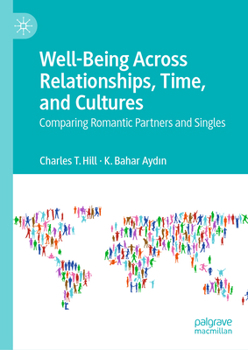Well-Being Across Relationships, Time, and Cultures: Comparing Romantic Partners and Singles
This book provides a comprehensive overview of the many components of well-being and the many factors which can influence it. As opposed to the books which explore just a single component of it or the well-being of one group at one time in one culture, it begins by reviewing theories of the cognitive, emotional, and behavioral components of well-being, and variations in relationships, time, and cultures that can influence well-being. It emphasizes that positive and negative well-being often comes in reaction to needs being met or not being met, or perceived as being threatened. A primary means of meeting needs is by interacting with others, in single encounters or on-going relationships. Part II presents new analyses of five studies that compare various types of relationship partners and singles, confirming that on average relationship partners often have higher well-being than singles. But many singles have high well-being, and some relationship partners have low well-being, with singles being more at risk of low well-being. Previous research has paid insufficient attention to the well-being of singles, who are an increasing percentage of adults. The final section provides an overview of the ways in which individuals, communities, therapists, and researchers can promote well-being.
Format:Hardcover
Language:English
ISBN:3032064309
ISBN13:9783032064301
Release Date:December 2025
Publisher:Palgrave MacMillan
Length:311 Pages
Customer Reviews
0 rating





